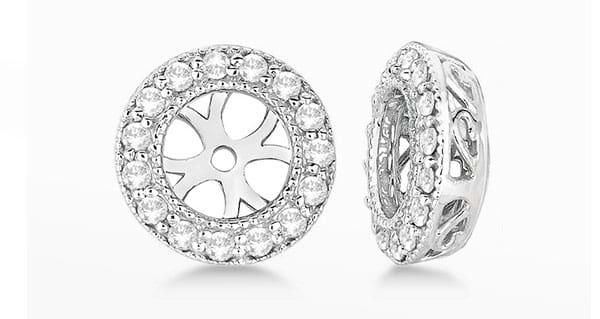Introduction to Diamonds
Diamonds have always fascinated us with their sparkle and allure. They’re symbols of love, power, and elegance. But with the rise of lab-grown diamonds, many people are now asking, “What’s the difference between mined and lab diamonds?” Let’s dive into this dazzling topic to uncover what sets these two types of diamonds apart.
What Are Mined Diamonds?
Mined diamonds are the classic gems that have been cherished for centuries. These diamonds are formed naturally deep within the Earth’s mantle under extreme pressure and temperature. The process can take millions of years, making these gems not only rare but also a natural marvel.
What Are Lab-Grown Diamonds?
Lab-grown diamonds, on the other hand, are created in a controlled environment using advanced technology. These diamonds are chemically, physically, and optically identical to mined diamonds, but they come with a much shorter creation timeline, usually a few weeks to a couple of months.
The Origins of Mined Diamonds
Natural Formation Process
The journey of a mined diamond begins deep within the Earth’s mantle. Carbon atoms are subjected to intense pressure and heat over millions of years, forming these precious stones. After their creation, they are brought to the surface through volcanic eruptions and are then extracted from kimberlite pipes or alluvial deposits.
Environmental Impact
Unfortunately, mining for diamonds often comes with a hefty environmental price. The process can lead to habitat destruction, soil erosion, and pollution. Additionally, there are ethical concerns related to the labor conditions in some mining regions. This has led many to consider alternative options like lab-grown diamonds.
The Science Behind Lab-Grown Diamonds
How They’re Made
Lab-grown diamonds are produced using two main methods: High Pressure High Temperature (HPHT) and Chemical Vapor Deposition (CVD). HPHT mimics the natural conditions of diamond formation, while CVD involves a gas mixture that settles on a diamond seed, layer by layer, to create a diamond.
Technological Advancements
Advancements in technology have made it possible to create high-quality diamonds in laboratories. These diamonds are scrutinized for their quality and can even have better clarity and fewer inclusions compared to some mined diamonds. The technology behind lab-grown diamonds continues to improve, making them more accessible and affordable.
Comparing Mined and Lab-Grown Diamonds
Quality and Appearance
Both mined or lab diamonds are visually indistinguishable to the naked eye. They both exhibit brilliance and fire, thanks to their similar crystal structures. Advanced gemological testing is required to distinguish between the two, making lab-grown diamonds a popular choice for those seeking quality without the hefty price tag.
Cost Differences
One of the most noticeable differences is cost. Lab-grown diamonds are generally less expensive than their mined counterparts. This is due to the lower costs of production and the reduced rarity factor. For many buyers, this makes lab-grown diamonds an attractive option without compromising on quality.
Ethical Considerations
Ethics play a significant role in the decision between mined and lab-grown diamonds. Mined diamonds can sometimes be associated with conflict or unethical labor practices. Lab-grown diamonds, however, offer a more transparent supply chain and are considered a more ethical choice.
Benefits of Mined Diamonds
Historical Value
Mined diamonds carry a sense of history and tradition. They have been used in jewelry for centuries, often becoming family heirlooms passed down through generations. This historical value adds a layer of sentimental worth that many people cherish.
Tradition and Sentiment
The tradition of giving a diamond ring as an engagement ring is deeply ingrained in many cultures. Mined diamonds hold a special place in this tradition, symbolizing enduring love and commitment. For some, the sentimental value of a mined diamond is unmatched.
Advantages of Lab-Grown Diamonds
Affordability
One of the biggest advantages of lab diamonds is their affordability. Since they are created in a lab, the costs associated with mining, transporting, and refining are eliminated. This makes it possible for consumers to purchase larger or higher-quality diamonds within their budget.
Sustainability
Lab-grown diamonds are also a more sustainable choice. They require less energy and water compared to mined diamonds and do not involve disruptive mining practices. For environmentally-conscious buyers, lab-grown diamonds present a compelling option.
Choosing the Right Diamond for You
Factors to Consider
When deciding between mined and lab-grown diamonds, consider factors such as your budget, personal values, and the intended purpose of the diamond. Each type has its unique set of benefits and trade-offs. Evaluate what matters most to you—whether it’s the traditional allure of mined diamonds or the modern, ethical appeal of lab-grown diamonds.
Personal Preferences
Ultimately, personal preference plays a significant role. Some people may prefer the tradition and history of mined diamonds, while others may appreciate the technological innovation and sustainability of lab-grown options. Choose the diamond that aligns best with your values and lifestyle.
Conclusion
Whether you’re drawn to the timeless charm of mined diamonds or the modern appeal of lab-grown diamonds, both offer stunning options to celebrate life’s special moments. Understanding the differences can help you make an informed decision that reflects your values and preferences. Remember, the best diamond is one that resonates with you personally and symbolically.




